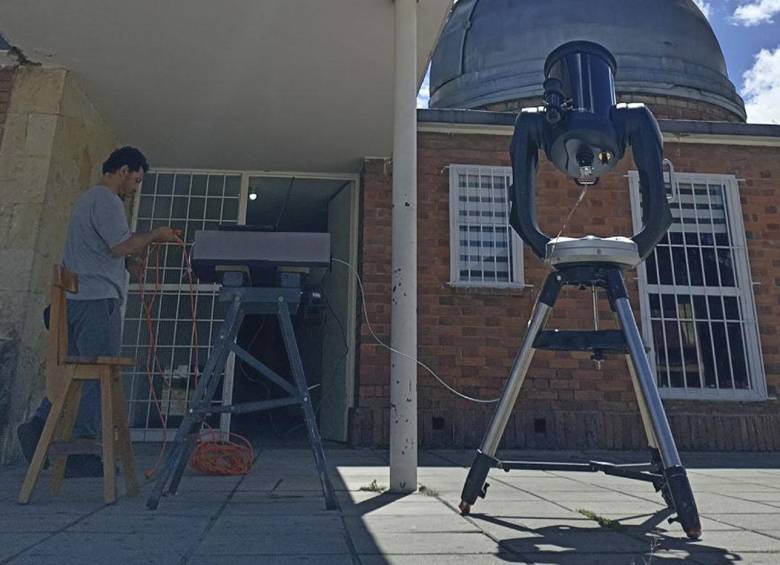
Jefferson Steven Arias Castro, a 28-year-old with a Master’s Degree in Astronomy from the National University of Colombia (Unal), has made a significant contribution to Colombian astronomy by designing the country’s first heliospheric camera for solar imaging. This achievement marks a notable advancement in the field, especially as such technology is scarce in Latin America.
Advancing solar observation capabilities
The device allows for detailed observations of the Sun, focusing on areas like the solar corona and solar wind. These elements of the Sun can affect Earth through eruptions and the shedding of particles, impacting our atmosphere and space environment.
Arias explains the camera’s purpose: “It captures spectral data, especially monitoring the Sun between 400 and 600 nanometers. This range is crucial because it includes phenomena that are not fully understood, such as coronal heating. Oddly, as you move away from the Sun, temperatures increase, contrary to what one might expect.”
The camera aims to shed light on why temperatures in certain layers of the Sun can jump from 5,777 degrees Kelvin to millions of degrees as you move away. Understanding these temperature variations could provide insights into solar phenomena.
Arias has long aspired to monitor the energy the Sun accumulates and releases. Such monitoring could clarify space weather conditions and assess risks to Earth’s satellites from solar radiation.
“Satellites are vulnerable to radiation from solar flares,” Arias adds. “While Earth’s magnetic field protects us, it’s crucial to protect space electronics and communication devices.”
The new camera benefits space missions by helping protect electrical equipment and improve planning. It has been installed at the Unal’s National Astronomical Observatory, with assistance from academics including Benjamín Calvo Mozo and Juan Carlos Martínez from the University of California, Berkeley.
A step forward for Colombian astronomy
The camera features a box with lenses arranged to capture the Sun’s image between 400 to 600 nm. Made from duralumin, it includes specialized lenses and fiber optic cables for clearer solar imaging. The device, costing less than $2,000, offers a high benefit-cost ratio compared to similar technologies that can cost much more.

Data from the camera, connected to telescopes via fiber optic cables, is processed through software that reconstructs the Sun’s wavelengths. This analysis helps understand energy buildup in the Sun.
With 12 fiber optic cables, Arias’s camera is a step towards advanced solar imaging, although the world’s leading cameras have significantly more. Regardless, it’s a valuable resource for researchers at Unal’s observatory in their study of the Sun and other celestial bodies.
This development is particularly timely as Colombia aims to enhance its space capabilities, with initiatives like a space agency and managing satellites such as Libertad 1 and Chiribiquete, focusing on environmental monitoring.
See all the latest news from Colombia and the world at ColombiaOne.com. Contact our newsroom to report an update or send your story, photos and videos. Follow Colombia One on Google News, Facebook, Instagram, and subscribe here to our newsletter.

